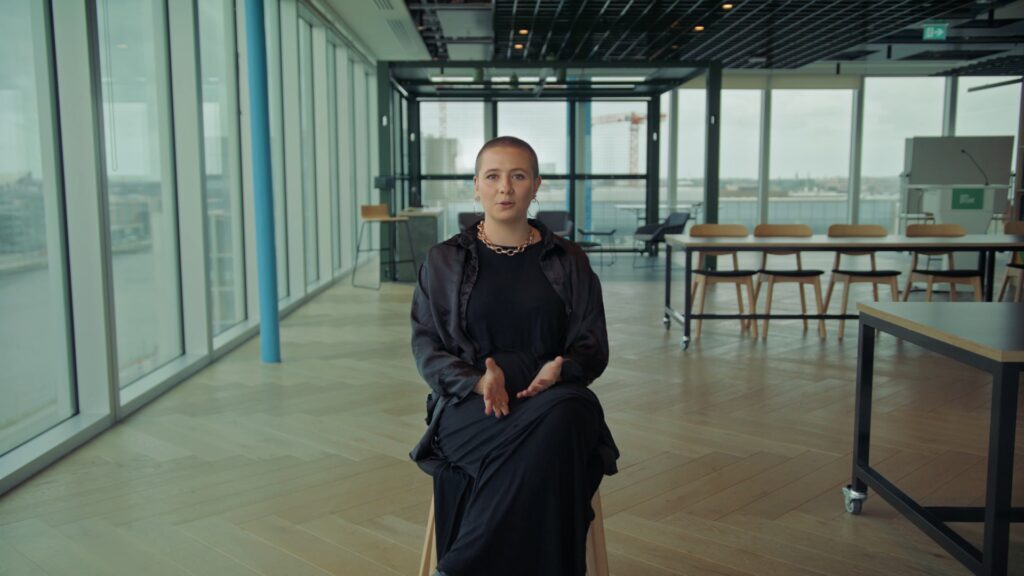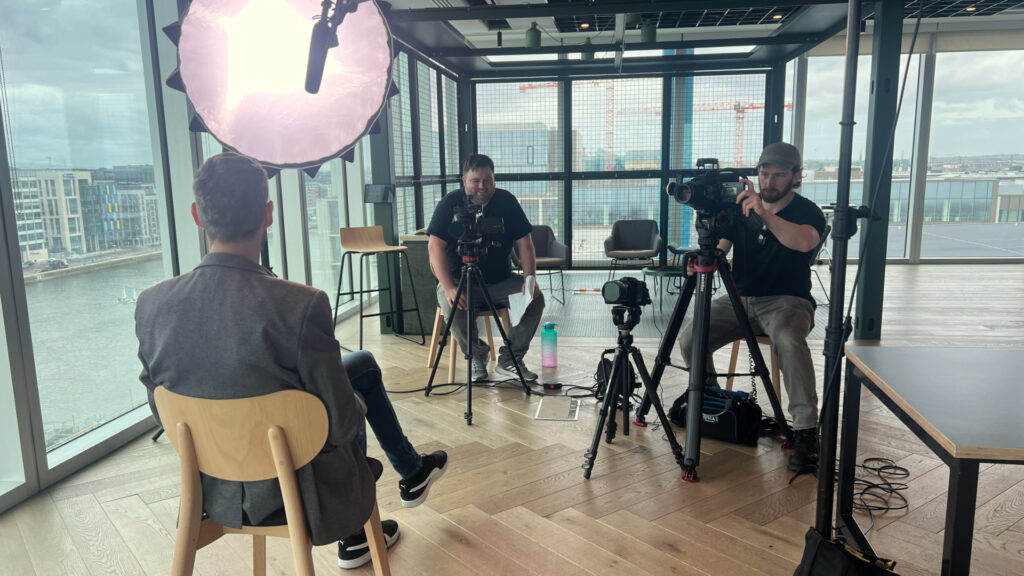The Future of Video Production in 2025
We’re going to let you in on a little secret: it’s been a strange few years in the film and video production world. Already our industry had been seeing steady but massive evolution over recent decades, but the last two or three years have really seen the way businesses like ours operate change remarkably. At the bigger end you’ve no doubt noticed some of this – streaming services have taken their place alongside (and in some sense, overtaken) broadcast media. Advertising can no longer rely on some of the ‘tried-and-true’ methods and outlets to get predictable results. The amount of things competing for people’s attention has risen and the standard of production people expect to see has gone up.
However, between Hollywood strikes, market saturation & audience fatigue, cuts to production budgets, economic down-turns, the emergence of generative AI and much much more, the environment for big creative productions has come under real pressure. The effects of this have trickled down to other markets, as the largely freelance talent pool that goes between this and the commercial & corporate production world has had to reassess its approach to work. Meanwhile, businesses have learned to be more savvy about how they spend their money and more scrutinising of measurable results.

POSTING TO SOCIAL MEDIA ISN’T ENOUGH
For a lot of businesses, an active social media presence doesn’t matter at all. If you sell B2B or by putting together tenders, your clients are not spending their working day looking at their social media feed (or at least they’re pretending not to…). They aren’t judging whether or not they should buy your products or services based on the video content published on your social media feed.
Where social media videos can work is in humanising your business and developing a relationship with the public at large.
VIRALITY DOESN’T MATTER
It might seem like the pressure is on to produce that one bit of content that blows up, but the truth is that the algorithms behind social media feeds are capricious and highly changeable. What might seem like it should go viral, doesn’t always. Often, those people whose content does seem to go spontaneously viral have actually produced mountains of content beforehand, hoping that one of them will finally stick.
As a business, the question has to be asked then: what usefulness is there to virality? If you’re a boutique hotel based in the west of Ireland for instance, how much value is there to having a post blow up globally? Sure, some will visit Ireland and seek out that hotel they saw in a video, but most of your actual customers are choosing you for other reasons (location, quality of service, the friendliness of your staff and regulars). It’s better to present a consistent message that shows off these strong points than to seek a moment of virality. That’s why we think:
AUTHENTICITY MATTERS

When you use social media, you have to treat it as an opportunity to be frank with the public – show them a truthful, positive and relatable side of your business. It can be expensive to make a highly polished ad, and it takes people less than a second to scroll past something they think is an ad.
Social media is not necessarily the right place to be putting big budgets into single pieces of content. Sure, content created for use on your website, in advertising materials and online marketplaces can also be used on social media (for example product photography and videos). But you have to bear in mind you’ll be competing with videos people took on their phones in their living rooms, showing off some every-day part of their life.
RELATABLE BEATS EVERYTHING
Some of the most successful pieces of video marketing we’ve seen recently have tapped more into people’s desire to see something moving, relatable, self-aware, or heart-warming rather than something technically spectacular. That’s why brands like to team up with established influencers and creators, to get their product onto the feeds of individuals that people already have a degree of emotional investment in.
BROADCAST ADVERTISING WILL STILL BE MORE OSTENTATIOUS
Where budget probably still counts is in the broadcast advertising realm. One clever idea exceptionally well executed can still become a talking point for the public, even as people spend less and less time watching established broadcast media. A good example of this is the way ‘the Christmas ads’ have become something of annual tradition, providing talking points in news media and getting people chatting online and off.
However, it’s true to say that this is one area of the video production industry that has seen budgets tighten quite acutely in recent years, due to the diffusion of audiences across alternative platforms and the difficulty of measuring results. There’s an age demographic split – younger people watch far less television than their older counterparts. This trend is likely to continue and is definitely something for businesses to bear in mind when considering a TV ad placement.

AD BLOCKERS AND THE WAR ON THEM
Be honest, you’re probably using an adblock or a browser that does that automatically. Certainly if you’re under a certain age or a little bit tech literate, you know this is an option. A lot of sites have responded to this by absolutely saturating their pages with advertising, some of which are more ethical than others. Google and other big platforms have now made it part of their mission to stigmatise the use of ad blockers and stamp out their usage.
Ads are part of how they pay for services like Youtube, so it’s understandable that they would want to. From the video production industry’s perspective, this means having to be clever about what things are worth advertising through video ads (i.e. what audience segmentation you can expect) and how you choose to present this content.
This all might seem like a challenging business environment for film and video producers, but most of this so far has concerned advertising, which in reality is only a part of what video production companies make. So the next question is:
WHAT ELSE WORKS IN 2025?
Video still serves an important role outside of social media and advertising applications. You can use video to accomplish a number of things for your business. From talking directly to your existing customers & retaining their business, b2b outreach and more, video can still be a powerful tool for your business.
VIDEO AS THE PRODUCT
Perhaps you sell e-learning courses, or offer training for employees at other businesses. Perhaps you produce resources for schools and educational institutes. Video can be a powerful part of your product offering, enabling you to sell beyond the geographic confines of where you can easily send your trainers and staff.
INTERNAL TRAINING CONTENT
Video can also work for in-house content. Maybe you need to induct your new employees to the safety procedures at your workplace. Video can be a useful tool for this. Remember though, we’ve all seen those cheesy videos from the 70s/80s/90s, where someone dryly narrates over footage of someone dropping a box on their foot.
As much as the music in those things is always a banger, it’s important to remember that everyone is at least a little media savvy now and no one wants to be patronised. Remember, authenticity is key; as is having someone with skill and experience on board to help in the delivery of these kinds of projects.

BUSINESS OUTREACH
A surprising amount of video never even makes it near a social media feed. Video remains one of the most eye-catching and comprehensive ways to go about B2B marketing. Show your prospective clients exactly what it is you do and why they should work with you.
RECRUITMENT
Here social media can actually play a role. Show the talent you wish to attract what your workplace looks like and the kind of work they can hope to be involved in. Careful ad placement can help with this, but leaving content of this sort pinned to feeds can also work long term to show future recruits what they can expect, as well as establish a bit of rapport with the broader public about your business.
CONCLUSION: SO, WHAT IS THE FUTURE OF VIDEO PRODUCTION IN 2025?
Although it might seem like we’ve been quite pessimistic about social media, the reality is it’s still the main way in which video content is delivered to us. It’d be foolish to say that it won’t have an important role going forward, even if that role has perhaps changed. Video itself though still remains one of the most powerful ways to communicate to any audience and can play a key role in a lot of businesses.
Obviously, predicting the future of video production in 2025 and beyond is a fraught endeavour, because the future is always going to be uncertain. No matter how technology or media changes, the one thing people will always seek is a human connection. If what you create has a heart and a personality behind it, then it will resonate with people now and in the future.

